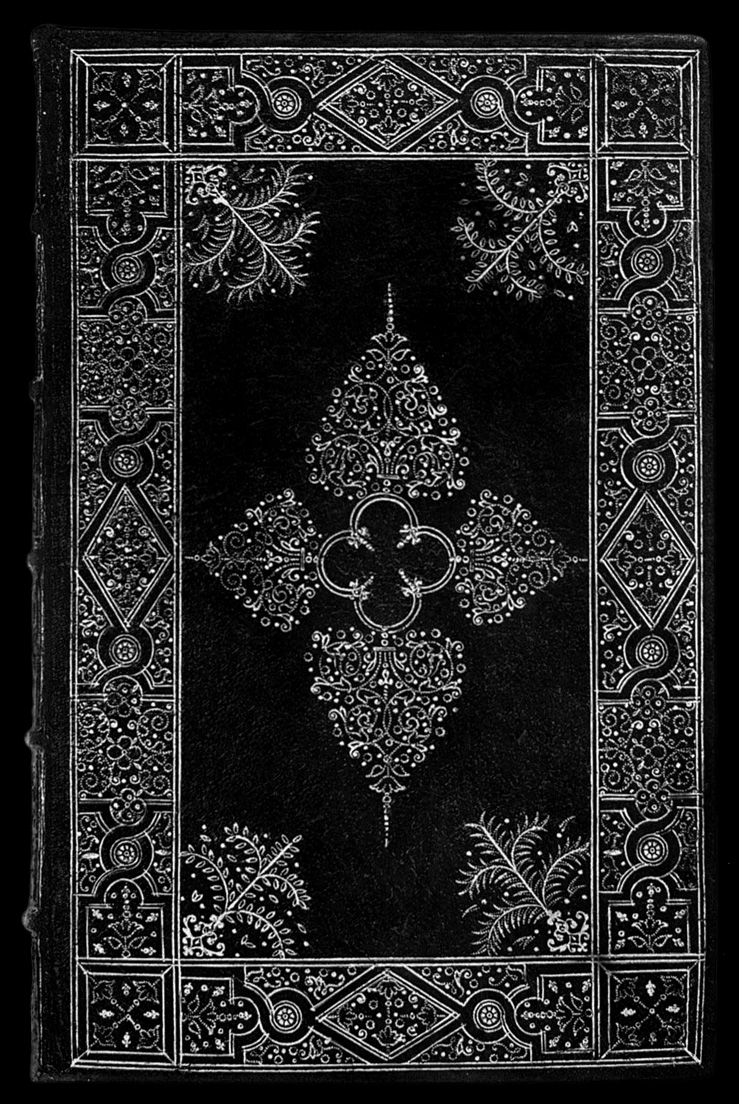

| The binding reproduced above (click on the image to see an enlargement) is from Gruel's 1905 Paris publication Manuel de l'Amateur de Reliures, II, P. 160, Gruel's reproduction is a high quality heliograph by E. Charreyre printed in a red tint. At first sight one is surprised to see the spine on the right side as such we might assume that this is a reproduction of the back board. However on closer inspection one notices that the top of this board is unusually flat... in fact this is the bottom and the binding has been printed upside down! I have corrected this in my reproduction above which shows the binding in its correct orientation and in black and white with additional contrasting to bring out the imprints which are anyway of a very good quality (click on the image to see a 300dpi enlargement). |

| We find this binding listed in Esmerian's Tableau II - ATELIER DE MACÉ RUETTE environ 1606-1638. It is No. 5 in the list in Section A - DÉCORS "A GERBES." I interpret this word "GERBE" to mean something like floral arrangement in a vase, a bouquet. Above, I have reproduced an enlarged "gerbe" where in we see that Macé Ruette was still creating his own spirals by combining small individual tools. I have, on a previous page diagramed a similar gerbe pointing out the obvious joins or breaks that reveal this process (see Macé Ruette - early methods) |
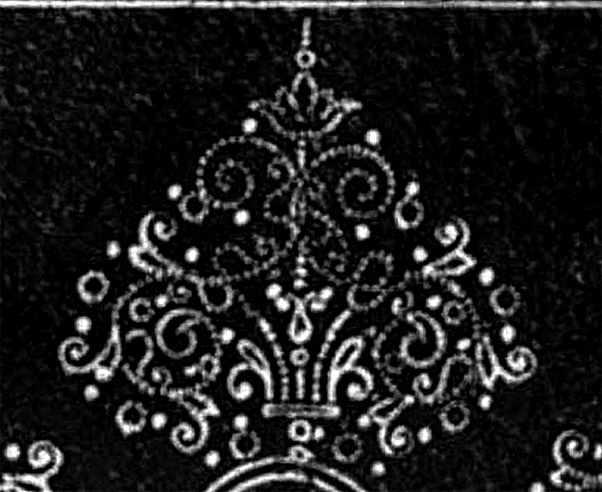
| In this second gerbe we see that he has incorporated 2 pre-made spiral tools, these spirals differ from the larger spiral tools such as those discussed on the previous page, these are more like the spirals that we observe in nature. Such spirals are called logarithmic spirals (click here to see the scientific definition) these are quite different from the larger spirals which are more like archimedean spiral (click here to see the scientific definition). The archimedean spiral is distinguished from the logarithmic spiral by the fact that successive turnings of the spiral have a constant separation distance, while in a logarithmic spiral these distances form a geometric progression. |

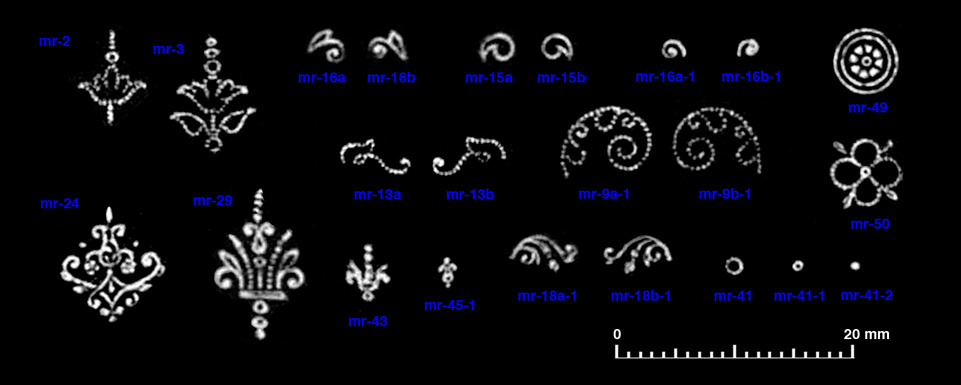
| In Comparative Diagram 1, I have assembled most of the more important imprints, I have not included strap work tools or some of the simple pointille curves that link the small tools in the component spirals. The numeration of these follows that of my previous Macé Ruette pages, and is, in no way, meant to indicate any sort of classification, but is rather only an attempt to catalogue tools. |

| Below we are going to look at a binding that Esmerian has listed as his first Antoine Ruette example (Tableau VI). The reproduction of this binding is from H.M. Nixon's book entitled Broxbourne Library, London, 1956, item no. 66. In his description of this binding Nixon notes that the item (a set of two volumes) had been acquired from Nicolas Rauch in 1951 and is listed in the 1949 Rauch Catalogue no.3, item 113. "This most attractive pair of bindings has been attributed by Nicolas Rauch in their catalogue no. 3 to Pierre Rocolet, who printed the book and was the royal printer and bookseller." Nixon then goes on to explain why this binding could just as easily be attributed to Macé Ruette, citing the 1638 Gruel example (shown above). Esmerian does not give his reasons for attributing this binding to Antoine Ruette, however as there is now some evidence indicating that Mace Ruette died in 1638, the attribution to Antoine would seem to be confirmed. |
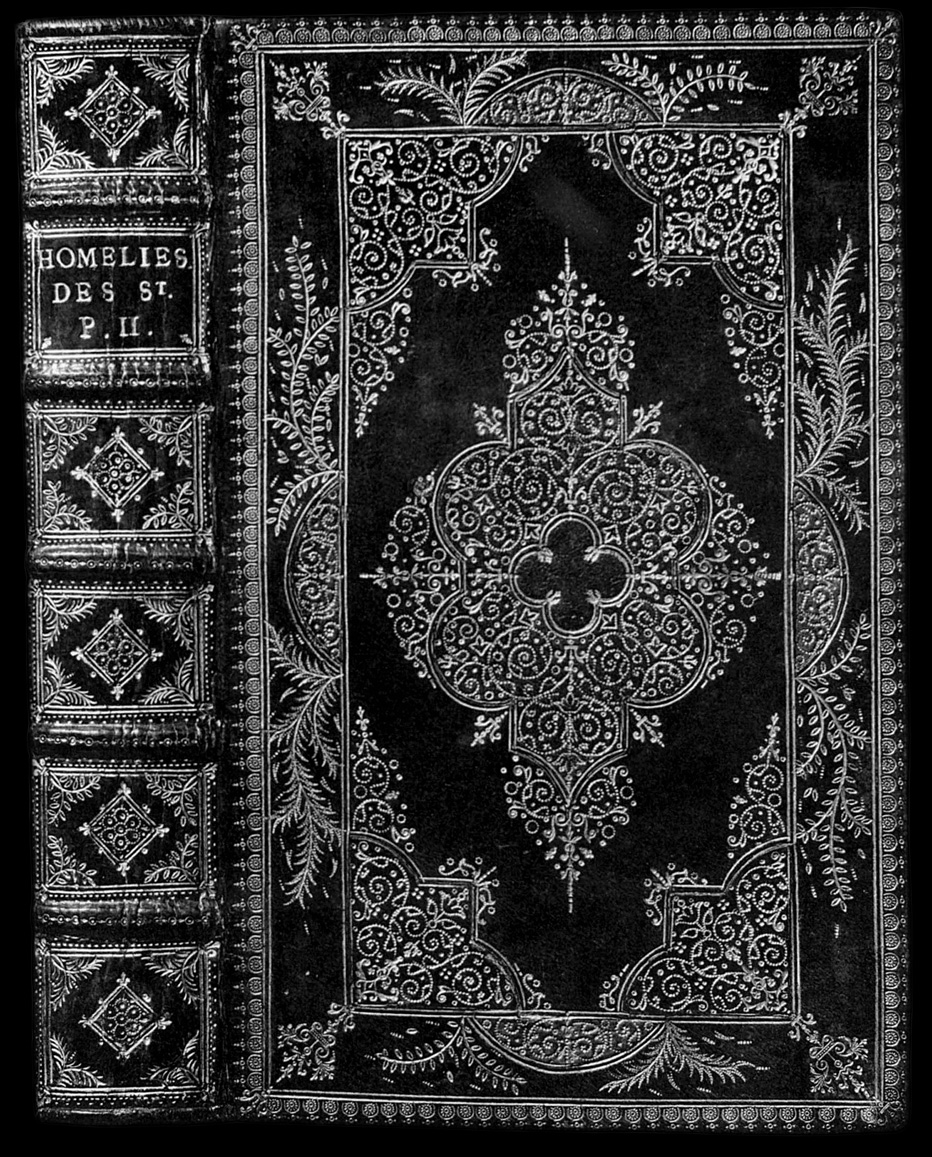
| A close study of the tools and methods as well a stylistic comparisons, suggest that this binding and the 1638 binding shown at the top of the page, could easily have been executed by the same binder. Given the possibility that Macé Ruette may have actually been too ill to work in 1638 (pure speculation), or that the 1638 example was actually bound after 1638 (a strong possibility) it seems quite likely that Antoine Ruette may have executed these bindings. This assumes however that he was able to reproduce bindings identical in style and workmanship to those of his father. It would be a lot easier to believe that Macé Ruette bound these books. If we dismiss this new evidence and imagine that he actually lived up to 1644 as previously assumed, then the mystery is solved. Perhaps it may be simpler to term such bindings as being "in the style of Macé Ruette." We can see that most of the imprints found here, derive from the tools of Macé Ruette, the only important deviation from this is the presence of an Antoine Ruette spiral (ar-35), notice as well the lack of scroll wings and the fact that there has been no attempt here to construct spirals. If there is a major difference between these two bindings it is in the use of a pre-made spirals, that replace the component spirals in the same position within the gerbe. |
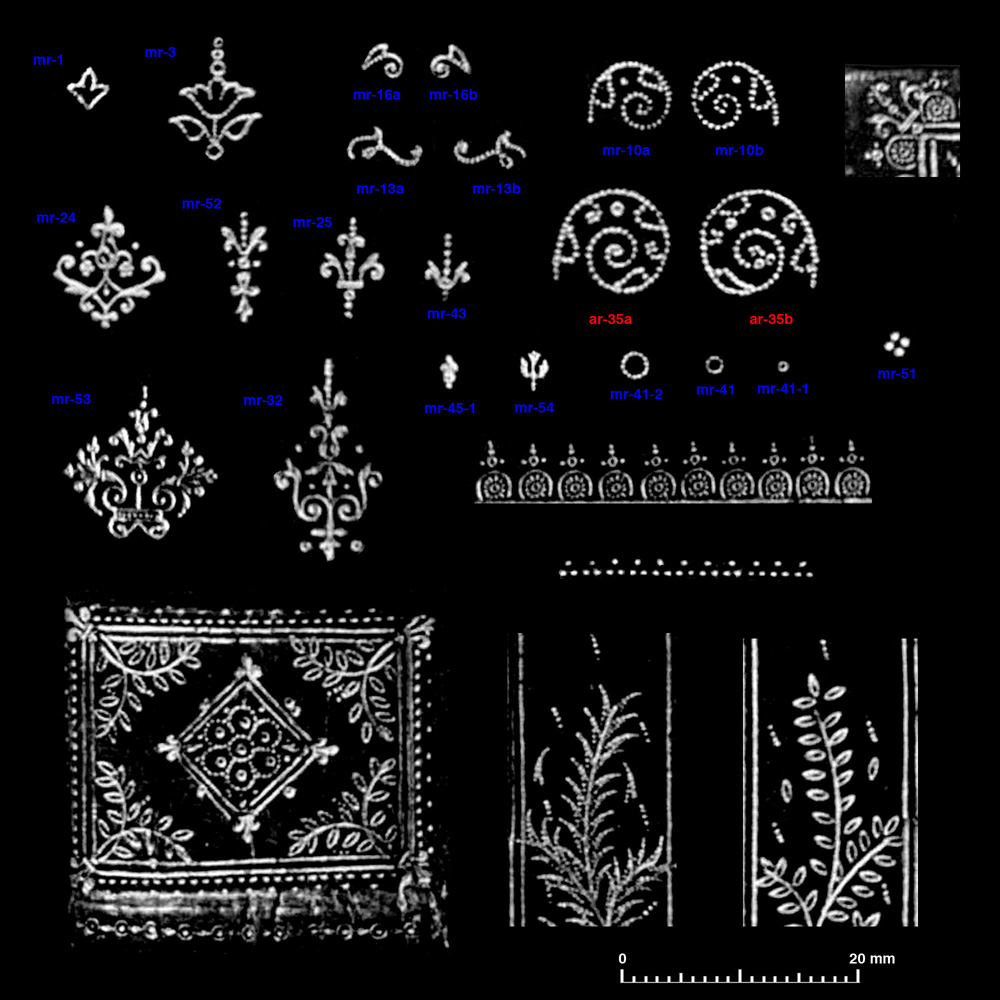
| Below I have reproduced part of the 1640 branch decoration, we see that it is entirely similar to the work of the 1638 example. As simple as this may appear it may be very difficult to accurately place these individual imprints so as to produce a harmonious result. |

|
Return to the Macé Ruette link page Return to the previous page. Antoine Ruette - According to the experts |
| information about the author | return to the home page of VIRTUAL BOOKBINDING |